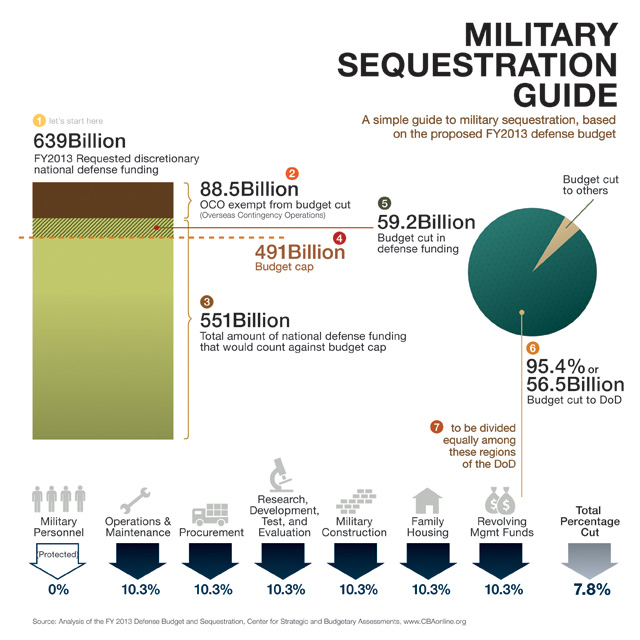The Budget Control Act, otherwise known as sequestration, was signed into law in 2011 as a measure to get Congress to actually do something. Congress’ task was to develop a comprehensive debt reduction plan. No one was particularly surprised when they did’nt…or at least, they havent. Basically, sequestration created a deadline, originally Jan 2, now March 1st, that would cause automatic across-the-board cuts in the federal budget, to be divided equally between defense and non-defense spending. It’s a total of $1.2 trillion over ten years, with the DoD being responsible for about half of that. Some people, Senator John McCain included, believe that DoD cuts of such magnitude would cripple the US’ ability to accurately meet future defense challenges.
There are important exemptions built into the act. The salaries and jobs of military and DoD personnel are protected. Though, it’s a $149 billion account that still counts against the DoD’s overall budget size, but can’t be touched. No base closures may result from sequesters. Additionally, Overseas Contingency Operations (OCO) funds are not on the chopping block. These total $88.5 billion and include the money used in Afghanistan, Iraq, and elsewhere.
President Obama and Congress created the provisions, and they can theoretically unmake them just as easily, which may be why Congress seems to have called the bluff and failed to act, rather than reach agreements. Even if the cuts begin, they can be undone at any point through a congressional debt reduction plan. Unfortunately, the country’s budget is essentially being held hostage by partisan politics.
Below is an infographic that we designed based on the fiscal-year 2013 defense budget request. The numbers are (hopefully) being reworked as we speak, and are subject to many changes, but this should give you a solid idea of how military budget sequestration works.
